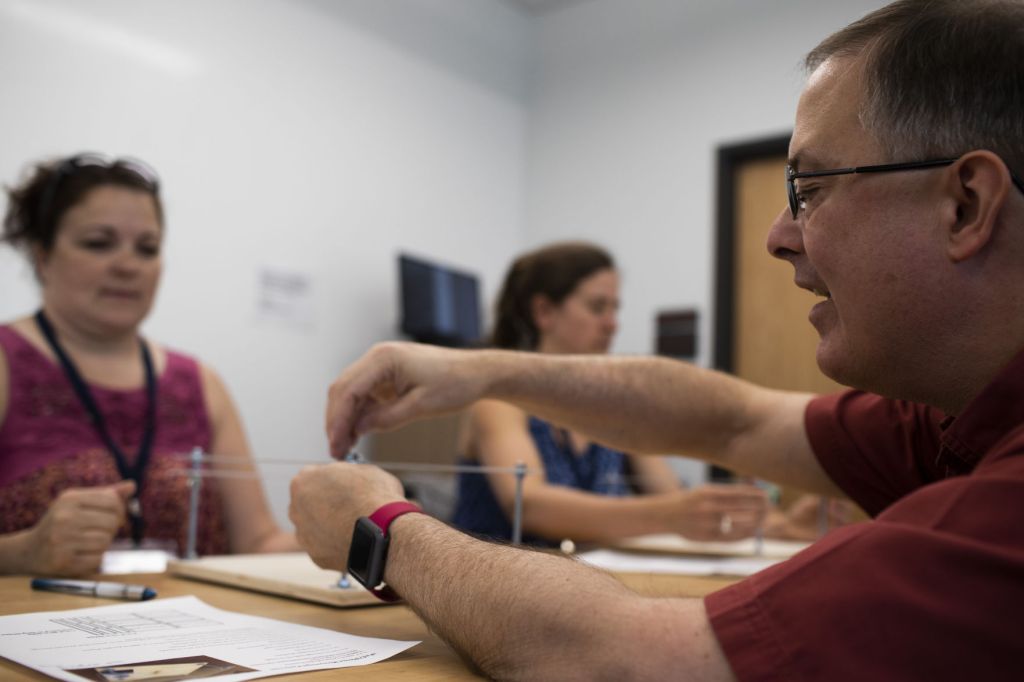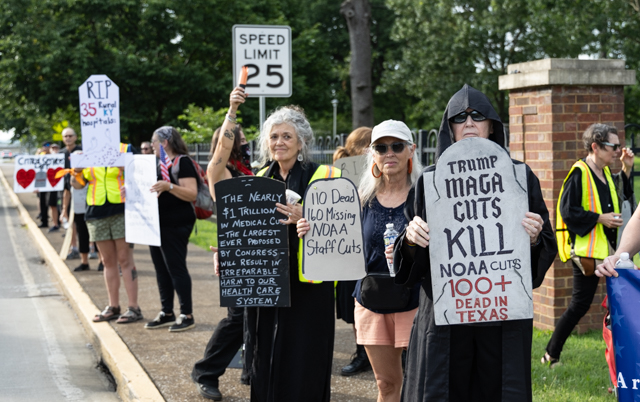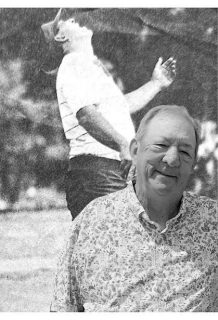WKU welcomes science teachers for partnership with National Stem Cell Foundation
Published 8:00 am Tuesday, June 4, 2019

- Rico Tyler demonstrates how to make an iPhone microscope out of plastic on Monday, June 3, 2019, at Ogden Hall. (Austin Anthony/photo@bgdailynews.com)
As she peered into her microscope, one she’d made using her iPhone, Holly Miller’s mind immediately went to her middle school students back home in Fishers, Ind., just outside Indianapolis.
“It’s amazing,” said Miller, a science teacher among a group of 10 from across the country participating in this year’s National STEM Scholar Program at Western Kentucky University.
Trending
Since 2015, the National Stem Cell Foundation and WKU’s Gatton Academy have been supporting groups of middle school science teachers with training and resources, hoping to inspire their students to become researchers and scientists.
On Monday, the first day of the weeklong program, Miller had already found something to spur her students’ interest in science. Capturing students’ interest in middle school, research shows, makes them more likely to study science, technology, engineering and math in college.
“It’s a game changer in my opinion,” Miller said. “And it’s only day one.”
After this week of training, teachers will return to their hometowns with new strategies and fresh ideas, some classroom tech and a $2,500 stipend to bring their classroom Challenge Project to life. The teachers are asked to dream big when they apply for the competitive program.
“We select them on the basis of the kind of projects that they’ve always wanted to do but they’ve never had the time or the funding, or in some cases, just a mentor that can guide them,” said Rico Tyler, who provided instruction to the group Monday as a master teacher with WKU’s SKyTeach program.
Over the last four years, teachers have had no trouble coming up with creative and captivating classroom projects, Tyler said.
Trending
One teacher started raising bees and made students beekeepers.
“They’re wearing the suits and collecting the honey and keeping their own records of how much honey’s being produced and what the environment conditions do to the honeybees,” Tyler said.
Another teacher is working with the state’s Department of Fish and Wildlife as students raise trout in computer-controlled tanks with different feeding schedules and temperatures.
“They’re trying to maximize the number of trout, the survival of the trout, how big they are,” Tyler said.
Other classrooms are conducting high-altitude balloon tests and dating layers of rock with microscopic, fossilized teeth fragments. All these projects likely wouldn’t have been possible without support from the National Stem Cell Foundation, Tyler said.
Paula Grisanti, CEO of National Stem Cell Foundation, said the organization started the project to get more U.S. students interested in science and math fields.
At first, the idea was to offer scholarships to high school students to accomplish that goal, but an expert in the field told Grisanti “If you’ve waited until high school, you’ve waited way too long.”
“You have to get those kids excited by middle school or you’ve lost them,” Grisanti said, adding that she was encouraged to invest in their middle school teachers instead.
After that, Grisanti had a plan, but it didn’t become a reality until she was introduced to Julia Link Roberts, a gifted education scholar and the executive director of WKU’s Gatton Academy and its Center for Gifted Studies.
Since the program began four years ago, Grisanti said its attracted 600 applicants from 40 states.
For Miller, the best part of any professional development “is the people that you meet.” Connections she makes with others involved in the program will offer support as she starts her own classroom project.
Miller wants her students to study eutrophication, where fertilizer runoff from farms flows into rivers. The result creates an excess of nutrients in the river and algae blooms that deplete oxygen and suffocate fish.
Paula Carlson, a teacher from Iowa, has always dreamed of doing robotics projects with her class, but getting the funding has been a struggle.
“This is a godsend. My school doesn’t have any robotics. We don’t have any programming, and so it’s something that’s a real high need area for my district to do,” she said.
Now, she’s dreaming up projects to create robotic arms and devices that can water classroom plants automatically over Christmas break.
““The opportunity to just explore a project of my own that I can just dig into, and do fully without having to … compromise here and there, I’m super excited about it,” Carlson said.






